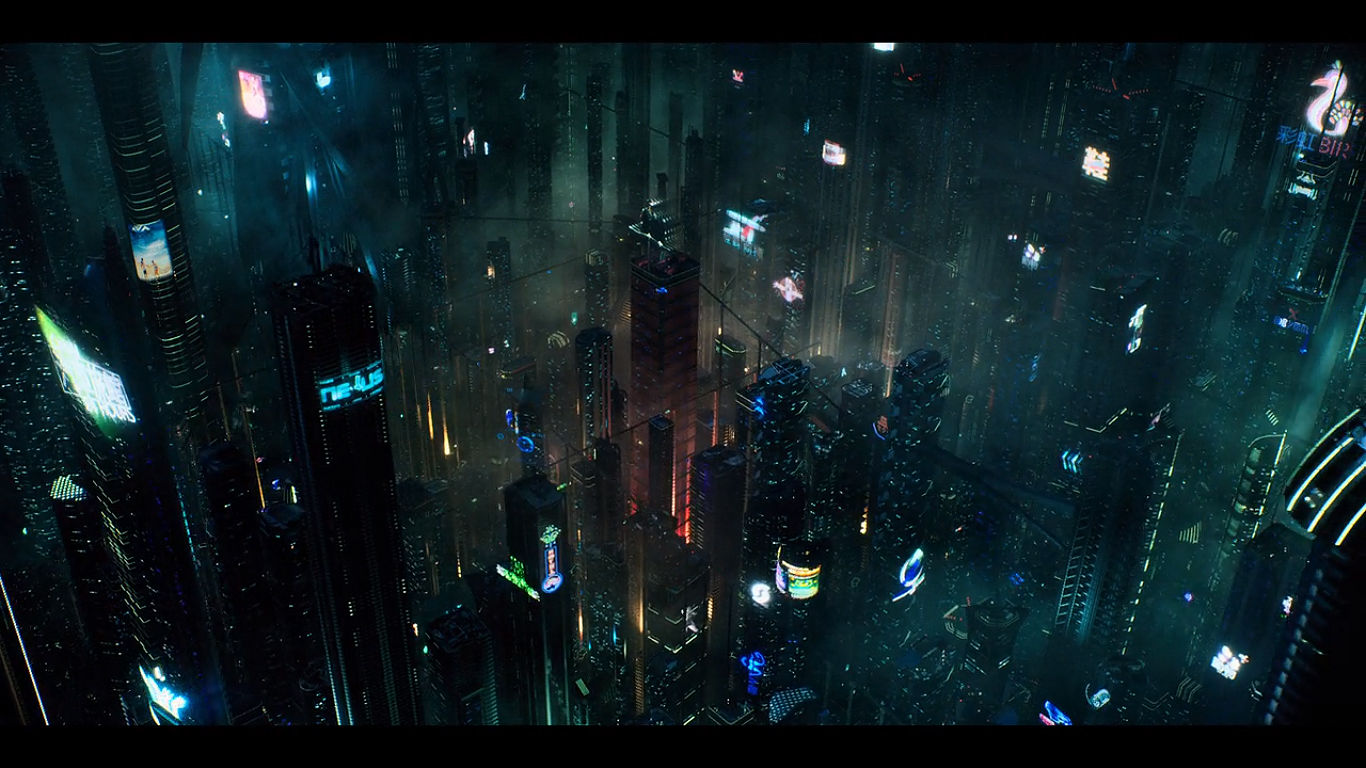Altered Carbon is a TV series in its first season, released on Netflix this year, based off a sci-fi novel of the same name. I was initially drawn to the accolades of the show, but eventually made my way through the book as well to see what concessions the scriptwriters made. Surprisingly, this is one of those instances where the big-screen rendition outclasses its source material.
In Altered Carbon‘s future, the human mind finally gets fully digitized and treated as stacks of data. People are thus defined by their stacks—physically represented as a disk kept at the base of their skulls—which means that minds can be transmitted, copied and backed up, or downloaded into new bodies upon old age or with too much damage. The title is referring to this era where carbon-based bodies are thought of and treated as commoditized, disposable vessels1. As you’d expect when decoupling minds from physical bodies, the plot provokes light questions about the nature of identity.
I enjoyed the effort in building out this fictional world. There are, of course, the very rich—they are effectively immortal and with their wealth spanning multiple generations under the same person, the economic system only further exacerbates economic inequalities. For everyone else, they eke out a living making most of their decidedly noire backdrop, augmented with sci-fi tropes along the lines of virtual reality and gorier guns and, conveniently, everything-enhancing drugs. The introduction of minds-as-data does allow for some radical shifts in society, but there’s also enough extensions of modern technology that keeps the story and settings somewhat relatable2.
In contrast, the plot itself is a bit flat. It’s set up as a detective story—which isn’t a bad means to visit a bunch of locations and allow for an encompassing cast of characters—with a somewhat ridiculous premise to investigate a murder that is inconsequential from the outset. Specifically, a 0.1% gets “murdered” by having his stack blown up, but is then restored from an offsite data backup and doesn’t know how or why he died—temporarily. For some reason, he’s obsessed with finding out, and figures the best way to do so is to revive an ex-military/SWAT-type (that’s our protagonist) and pay for his detective work to solve the case. Eventually the story does pay off, but the motivations are flimsy at best.
Surprisingly, the show does a good job in tweaking the original story’s settings and plot to make it friendlier for live-action television3, and also flushes out the cast of characters more fully than its source material. The cast feels more impactful to the story and memorable as drivers of the overall story, though admittedly a part of the difference is just being able to put faces to names. The major plot points all correlate between the two mediums, and both wrap up with a soft reset for the next season/book in the series.
So really, if the idea of a noire, cyberpunk future where everybody could be anybody sounds like a good time, Altered Carbon—the recently released TV series on Netflix—is worth your patronage.
Though there is some subtext on the exact nature of these biological “sleeves”, in who can afford them and how governments and the law deal with this added dimension.↩
The author also takes some pains to reference San Francisco Bay Area locales, which is about how we would reference landmarks established decades ago.↩
Or whatever the Netflix-equivalent is nowadays.↩



